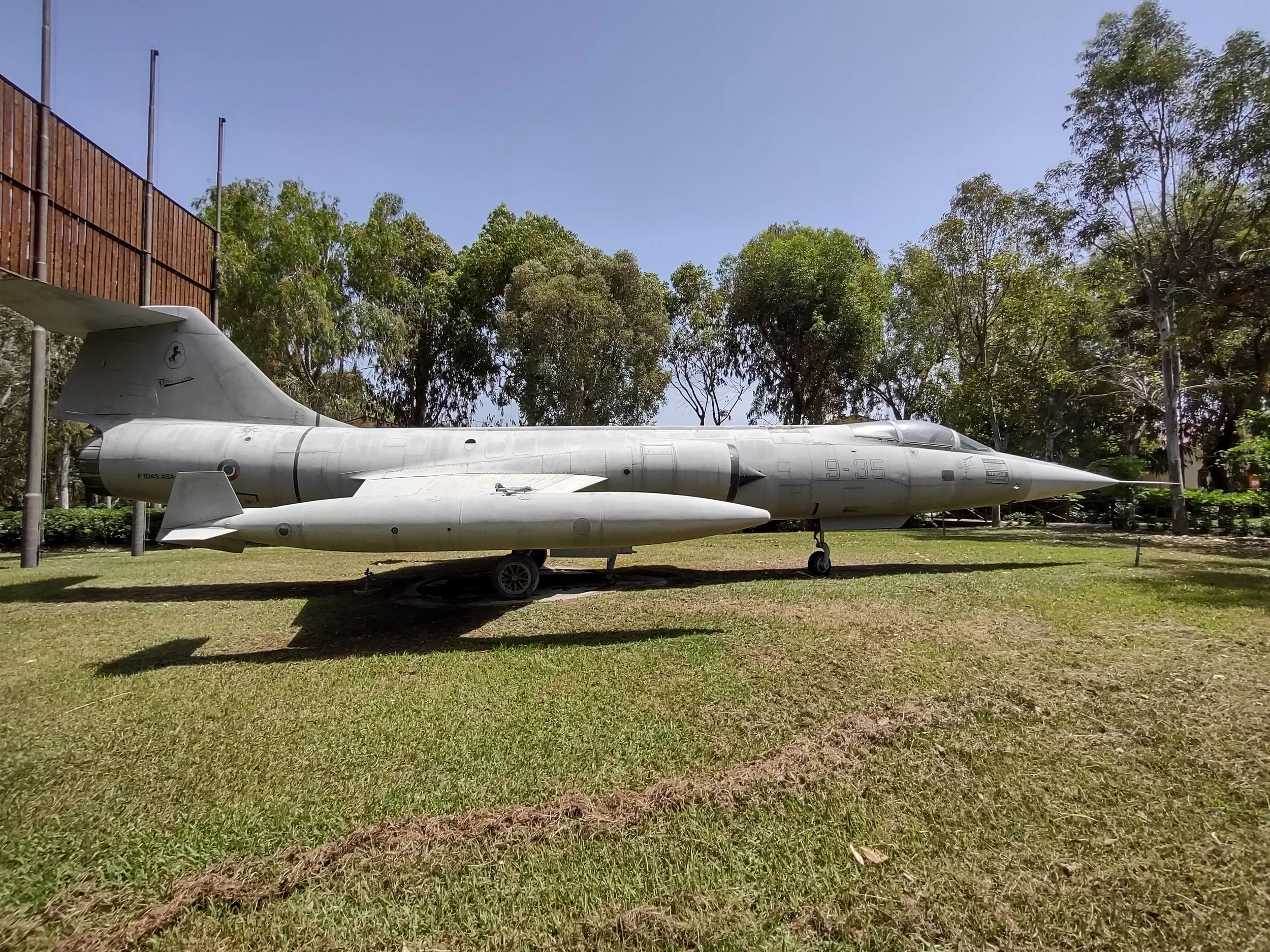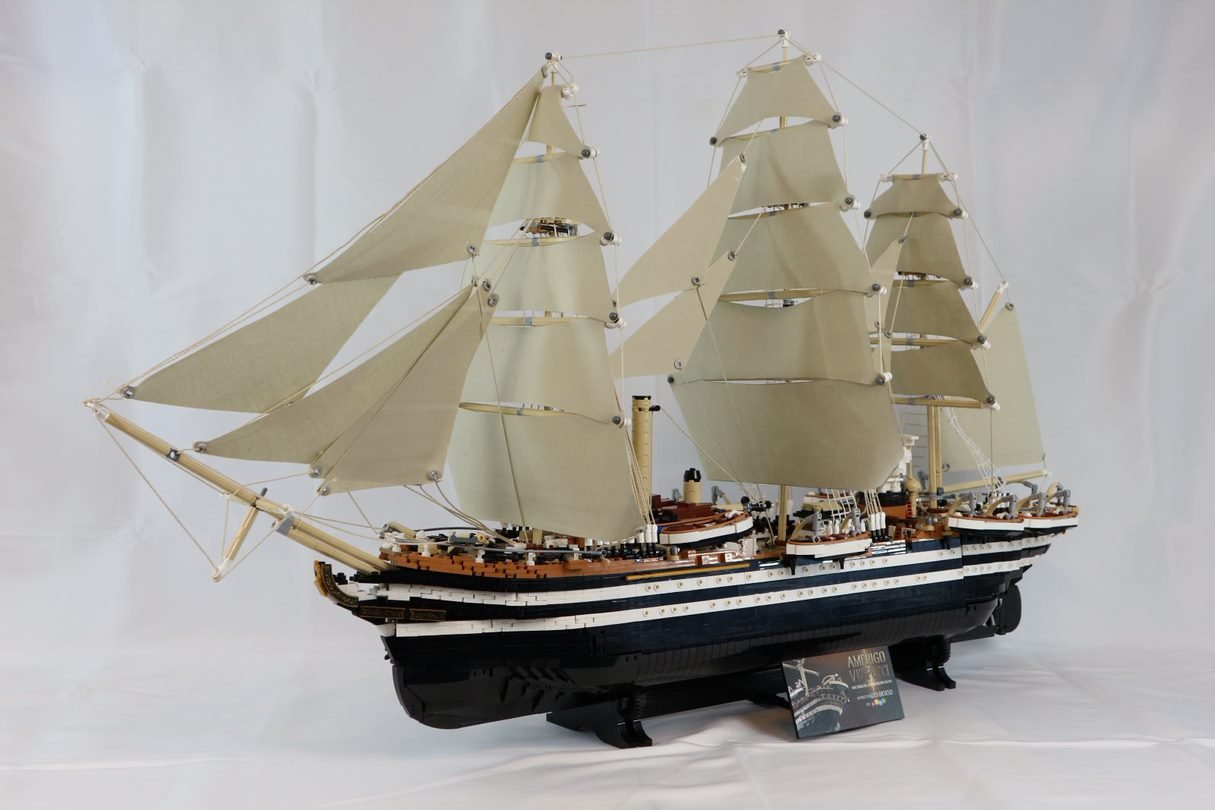Missile With A Man In It: The LEGO Lockheed F-104 Starfighter
/These pages of BrickNerd have seen me gush over a Lockheed F-104 Starfighter before. The last time it was in a beautiful Canadian livery. Today, we get an Italian F-104 built by Luca Gaudenzi. Luca captures an excellent minifig scale rendition of the F-104 (Flickr/Instagram). In my previous article, I covered some high-level history; in my write-up this time, I’m going to share a little engineering with you before continuing on to my chat with Luca.
Hang on, there is some math ahead! (Skip this next section if you need to!_
Supersonic Aerospace Engineering
Warning: Very Nerdy Material with Math!
Great secrecy surrounds the development of military aircraft—even commercial aircraft are kept pretty quiet. There are many reasons for that, but for any aircraft, a single picture can tell you a lot about its capabilities. If you can get a good side view and a top view, you can learn a lot. For a supersonic capable aircraft, which most modern jet fighters are, a good top and side view are all you need to determine the maximum speed. (The A-10 Warthog and F-117 Night Hawk Stealth Fighter are the exceptions that are still in use. OK, the F-117 is officially retired but the USAF still uses a few and they have been seen flying…)
Once you know the top speed, the range and payload can be estimated. Then you can start evaluating your competing systems and determine what upgrades you need. This is how arms races start and the reason for the military aircraft evolution that started in WWII. So how does one go about finding the maximum speed of a supersonic aircraft? It’s quite simple, with only a little trigonometry! The Maximum Mach angle of a cone or wedge is governed by the equation:
Sin β = 1/M
Where β = ½ angle of wedge or cone
M is the Mach number
(Mach 1 is the speed of sound at your temperature, pressure and altitude).
This equation came from Fundamentals of Flight 2nd ed by Shevell, an excellent resource, but it is also in many other textbooks and references as well. If you assume that all of the aircraft is within the shock cone and you stay in the realm of attached normal shocks (oblique, detached shocks take much more energy and are generally the realm of missiles, rockets, and spacecraft!), all you need is a good side and top view and a trusty protractor! I’ve demonstrated a few:




Some aircraft like the Concorde (see Ronald’s article on the new LEGO set and other model airplanes) had other structural concerns that kept the top speed down. The math says the Concorde was theoretically much faster, but the aerodynamic heating at higher speeds would have overstressed the structure.
The SR-71 Blackbird is the opposite end—the math agrees with the published top speed of Mach 3.3, but the unique engines may have been able to push it into the detached/oblique shock energy range, or it was designed with the ability to operate with the shock cone at a tighter angle and having parts of the structure in supersonic airflow.
I ran the numbers for the F-104 (loaded and unloaded), the Concorde, SR-71, and F/A-18 Hornet:
End of Nerdy Engineering with Math!
On To The LEGO
Luca posted these pictures in January and June of 2022, and due to a combination of both of us not checking Flickr messages regularly, this chat was a long time in the making! Here’s how the chat went down:
Michael: Luca can you tell us a little bit about yourself?
Luca: I am an Italian aeronautical engineer currently working for a subcontractor of Airbus in Hamburg, Germany. Engineering has always been one of the main focuses of my life, both in professional and recreational life. I appreciate the technical aspects of all the things around me, even the more trivial. My journey with LEGO restarted circa eight years ago after ten years of dark age, when I found a LEGO fan shop near my university. Rediscovering an old passion and slowly understanding how deep the community is revived my enthusiasm for it, and now I am more passionate than ever!
Michael: Looking at your photo stream, military aviation seems to really be your focus. What draws you to that subject?
Luca: As I said earlier, my big interest is aeronautical engineering, and that drives the majority of my builds. I like to have a scale modeling approach, with the main focus on the observance of proportions. The scale I use for most of my models is 1:40, but it’s not an absolute rule: With LEGO, you often have to be creative and/or make some compromises.
Michael: Your minifigure scale F-104 drew me to your work. I especially love your pictures with a real Starfighter. What drew you to build an F-104?
Luca: The F-104 was the wish of a close friend, Nicola Bozzolan, with whom I collaborate a lot making small batches of LEGO custom model kits. He even managed to make me talk with a real pilot of the plane which gave precious information about small details and the livery. Also, the F-104 is an important chapter of Italian military aviation because was produced under license by FIAT Aviazione and served in our military until 2004.
Michael: Were there any particular challenges at this scale?
Luca: The F-104 is a plane with a tiny cross-section, so building it required a lot of trial and error. The prototype was built in a month, facing some challenges in particular areas like the canopy (which is the less accurate part in my opinion) and the anhedral wings. (Side note from Michael: Anhedral is when the wings angle down from the aircraft—dihedral is when the wings angle up.)
The air inlets on the sides are a unique assembly with the respective wings, both hinged on the central spine on top and bottom. The engine compartment is built around two Bar 12L with 1 x 2 Plate End stacked together on which the sides, bottom and tail clip on, giving a super compact and cylindrical shape.
Michael: Where is the real F-104 the photos are with?
Luca: The real F-104 can be found in the “Piana delle Orme” museum near Latina, in Italy. This place is the home of the main exhibition of the RomaBrick LUG, organized once a year at the start of the summer season. Coincidentally, the plane displayed there has the same livery as mine: it was a lovely surprise!
Michael: You have some great solutions like the 2x3 pentagon tile for the half conical inlets ramps, and the minifig posing stands for the main landing gear to wheel joint to get the right angles.
Luca: I always try to use new pieces for my builds, experimenting, testing connections and techniques. It’s not unusual for me to buy a new small set only for a little new part to fiddle with.
Michael: You do branch out here and there occasionally, like the fantastic tall ship Amerigo Vespucci and some delightful food-themed mechs among other subjects. What else do you enjoy building?
Luca: I am currently focused on Italian military aviation, which I have several works in progress on. Apart from scale models, little silly builds like the Food Fighters you cited are an amusing distraction from time to time. I also enjoy building LEGO RC cars and tanks with aftermarket motors and batteries (Buwizz).
Something I would like to switch focus on is adding context to my builds because I think that a bit of landscape could add a lot to complete the models.
Michael: Is there anything else you’d like to share?
Luca: I would like to thank the community of friends I share this passion with, Brickout LUG and RomaBrick LUG: they are a constant source of ideas and enthusiasm!
Michael: Thanks so much Luca!
What planes would you like to see built out of LEGO? Let us know in the comments below.
Do you want to help BrickNerd continue publishing articles like this one? Become a top patron like Charlie Stephens, Marc & Liz Puleo, Paige Mueller, Rob Klingberg from Brickstuff, John & Joshua Hanlon from Beyond the Brick, Megan Lum, Andy Price, Lukas Kurth from StoneWars, Wayne Tyler, LeAnna Taylor, Monica Innis, and Dan Church to show your support, get early access, exclusive swag and more.


























